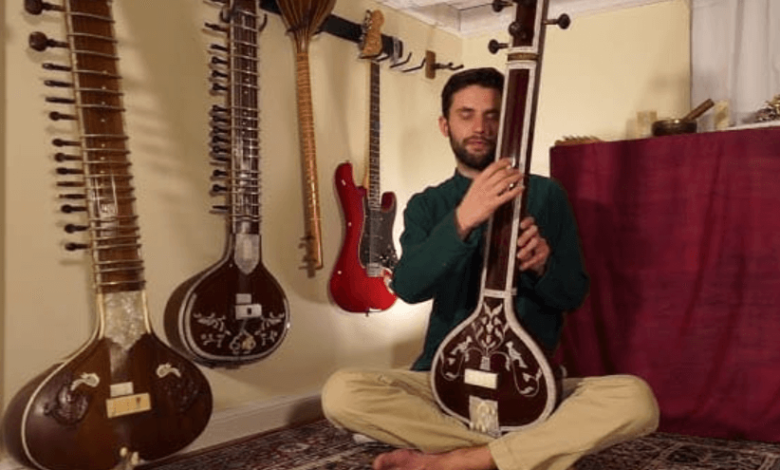Role of Tanpura in Hindustani Singing Practice

What makes the tanpura indispensable in traditional Indian music? How does this instrument enhance the learning and practice of classical vocal styles? These are common questions among those exploring the depth of Hindustani music.
In the context of Hindustani singing classes, the tanpura plays a foundational role. Its continuous drone creates a perfect auditory canvas for vocal exercises, enabling students to master pitch and scale effortlessly. Understanding its significance can enrich the learning process and deepen one’s appreciation of classical music.
Why the Tanpura Is Central to Classical Practice
The tanpura is not just an instrument; it is the lifeline of Hindustani classical practice. Unlike other stringed instruments used for melodies, it is solely dedicated to producing a drone. This drone, a consistent and harmonious sound, provides the necessary backdrop for vocal improvisations and exercises.
The tanpura’s sound helps singers stay grounded in their chosen key, ensuring accuracy during practice. Its steady resonance guides vocalists, creating an environment where precise notes and pitch perfection become second nature. This makes it indispensable for students aiming to refine their skills.
Read also: Choosing the Right Medical Mattress: A Comprehensive Guide
How the Tanpura Shapes Vocal Training
In classical vocal training, the tanpura is a tool for developing a strong sense of swara (notes) and shruti (microtones). Its continuous sound keeps the singer aligned with the tonic note, allowing for seamless exploration of ragas. By integrating the tanpura into daily routines, learners gain a deeper connection to the art form and improve their overall vocal quality. The instrument aids in the following key areas:
- Pitch Stability: The drone reinforces the base note, helping singers maintain accuracy in pitch throughout their practice.
- Raga Exploration: Its harmonious background supports the gradual unfolding of ragas, crucial for classical renditions.
- Voice Training: Regular practice with a tanpura helps develop a more resonant and controlled voice.
Types of Tanpura for Different Needs
Tanpuras come in various designs, each tailored to specific requirements. While traditional wooden instruments remain popular for their acoustic richness, modern alternatives like digital tanpuras offer convenience. Choosing the right type depends on individual needs and circumstances, but the focus should always remain on the quality of sound. Here’s a breakdown of the main types:
- Acoustic Tanpuras: These are handcrafted from wood and produce a warm, natural sound. They are ideal for serious practitioners who value authenticity.
- Digital Tanpuras: Portable and easy to use, these are popular among beginners and those traveling frequently.
- Electronic Apps: With advancements in technology, many applications simulate the tanpura’s sound, making it accessible to anyone with a smartphone or tablet.
How to Incorporate the Tanpura into Daily Practice
Using the tanpura effectively requires discipline and a structured approach. These practices, when done consistently, can elevate a learner’s grasp of classical music and build a solid foundation for advanced techniques. Below are some tips for maximising its benefits:
- Tune It Correctly: Ensure that the instrument is tuned to the appropriate scale and pitch before starting practice.
- Begin with Basic Alankars: Practice simple patterns of notes to get accustomed to the drone and develop pitch accuracy.
- Focus on Sustained Notes: Sing long, sustained notes to build a connection with the tanpura’s sound and enhance vocal control.
- Experiment with Ragas: Gradually explore different ragas, using the tanpura to maintain a steady key.
The Hindustani singing classes emphasise the tanpura’s role for good reason. This simple yet profound instrument creates a perfect foundation for vocal training, ensuring that learners develop a strong sense of pitch and melody. Whether acoustic or digital, the tanpura remains an irreplaceable part of classical music education, enabling singers to connect deeply with the art form.




